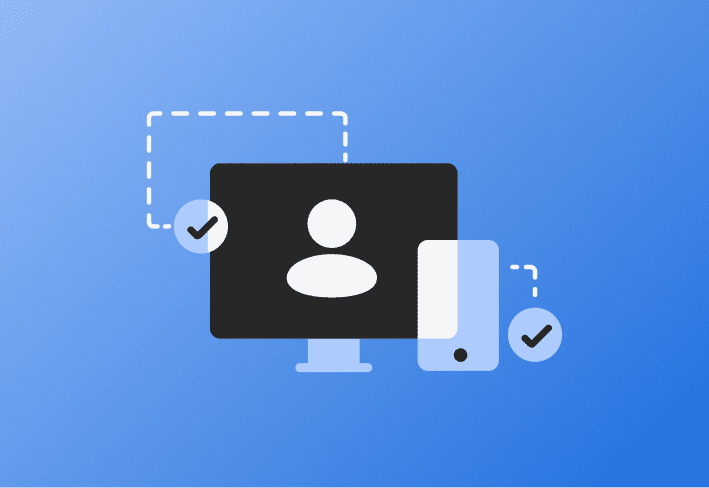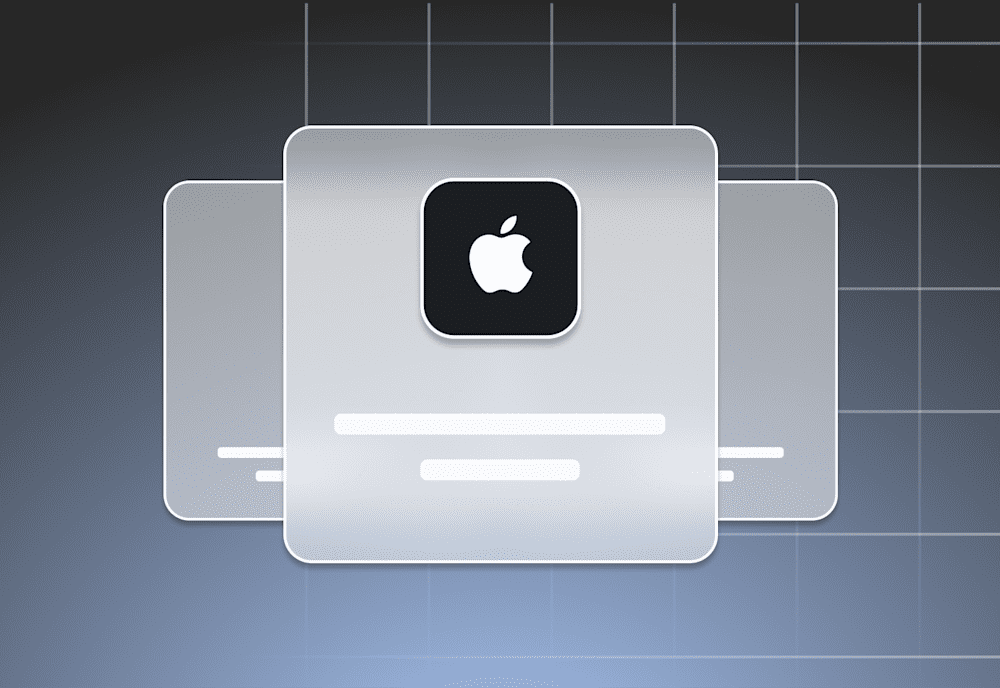Mobile device management (MDM) helps organizations oversee and maintain their team’s smartphones, tablets, and other mobile devices. As the great Apple vs. Android debate rages on, your mobile device management tool needs to accommodate the types of devices your employees use.
Apple MDM and Android MDM have similarities and differences, but either device type may be ideal depending on your organizational needs and goals. Learn more about the MDM implications rather than letting your office’s ardent Apple supporters or avid Android fans sway your decision.
How does MDM work on iOS?
Apple MDM software works with Apple Business Manager or Apple School Manager to give IT administrators convenient device configuration and deployment tools for any macOS, iPadOS, or iOS device. Here are some of its main features:
User enrollment and setup
By connecting Apple Business Manager to Microsoft Entra ID and Microsoft Intune, you can enroll company-owned devices automatically via Automated Device Enrollment without physically preparing them. Setup Assistant also allows your IT team to push custom configurations.
Account management
IT can create and manage employee accounts through Managed Apple IDs. In addition, a Managed Apple ID can be used alongside a personal Apple ID on employee-owned devices.
Content distribution
When you find a resource your staff needs, you can purchase it and distribute it in bulk. Push out the latest apps, books, on other content quickly and easily. You can also distribute app and media licenses.
Apple Configurator and Apple Configurator 2 provide scaled-back versions of these features. While the iOS device is plugged into a computer, an administrator can control configurations, install apps, distribute licenses, and more. That said, most sysadmins prefer to use Apple Configurator or Apple Configurator 2 in conjunction with a high-quality Apple MDM solution.
That’s because MDM solutions typically offer more advanced features, greater ease of use, and remote deployment capabilities. Small businesses and those with just a few mobile devices might get by with Apple Configurator, but most enterprises that use Apple devices rely on a quality MDM tool.
How does MDM work on Android?
Historically, businesses have often considered Android mobile devices more difficult to manage due to their diversity. With so many versions of the Android operating system, fragmentation can limit interoperability and make Android device management a real beast. Luckily, Android mobile device management software has made great strides in recent years.
Android Enterprise Recommended MDM tools use Android Enterprise APIs to support the following features:
User enrollment and setup
Android MDM allows several deployment options, including zero-touch device enrollment, bumping a near-field communication (NFC) tag, entering a unique EMM token, scanning a QR code, and enrolling with a work email address through Google Workspace.
Account management
An Android MDM solution allows employees to maintain an Android Enterprise work profile and a personal profile on the same device, switching between the two with just a swipe. The two profiles do not share data, making it easy for employees to use their personal devices in conjunction with a bring-your-own-device (BYOD) policy.
Content distribution
Android MDM allows you to distribute apps to devices through managed Google Play. You can push approved apps to user devices or make them available through the managed Google Play store.
Are there any similarities between Apple MDM and Android MDM?
From an administration perspective, Apple MDM and Android MDM are pretty similar. The right MDM solution for either platform simplifies many common tasks. Here are a few functionalities they have in common.
Enrollment
Regardless of whether you’re using Apple MDM or Android MDM, your solution should help you enroll compatible devices from approved resellers. Administrators can automate bulk enrollments for company-owned devices. Each personal device can also be enrolled via self enrollment, invitation, or bulk enrollment via CSV file.
Access control
An IT administrator can use an MDM solution to assign roles and configure permissions so that each user has access to the resources they need.
Profile management
A high-quality MDM solution for Apple or Android devices allows you to configure profiles so that you can easily set up specific preferences, policies, restrictions, and settings.
Asset management
Across platforms, MDM solutions frequently offer asset management features, such as reporting. Tracking asset information can help simplify audits, confirm compliance, and show how employees use company devices.
Applications
Many of the same business applications are popular for both Apple and Android devices. You’ll probably need to push out deployments of some of these apps, like Asana, Slack, Zoom, and apps in the Microsoft 365 and Google Workspace families.
Containerization
MDM solutions frequently use BYOD containerization so that users can compartmentalize personal data and corporate data on the same device.
What are the differences between Apple MDM and Android MDM?
Maybe it’s time to replace the phrase “like apples and oranges” with “like Apples and Androids.” Because while the two share some similarities, there are countless differences. Here are a few of the ways Apple and Android MDM vary.
OS updates
Since many Android producers customize the operating system, their updates must also be customized. This means less frequent patches and upgrades. In fact, some devices may never get an update if their manufacturers decide it isn’t worth the hassle. In contrast, Apple issues regular iOS updates, including support for older devices. While updating devices creates more work for the IT team, it also keeps those devices more secure and enhances their functionality.
Consistency and flexibility
Since every Apple device is made by Apple, the operating system, hardware, user experience, and features are much more similar. This can help streamline the MDM process. On the other hand, Android devices are far more diverse. Therefore, it may be easier to customize an Android device or find an existing model that more closely meets your needs and budget. However, managing disparate devices is inherently more complicated.
Efficiency and speed
iPhones have a reputation for being faster than Androids. Particularly as an Android device ages or more apps are installed, it’s likely to slow down. Both users and the IT team may have to put in a little more time when working with multiple Android devices.
Durability
While concrete statistics aren’t available, Apple devices are widely believed to outlast Android devices. For your IT team, this can mean less time configuring new equipment.
Expense
Apple devices tend to have higher price tags than Androids, so they generally require a larger up-front investment. However, their greater longevity and efficiency of management may make them more budget friendly in the long run.
Security
Security is a top concern in both Apple and Android MDM. Neither platform is immune to threats. However, it’s easier to install apps from illegitimate sources to Android devices, making viruses and malware easier to distribute and harder to track. The Apple App Store has stricter security standards, so your company devices may be less likely to pick up cyber cooties from apps.
What’s the difference between MDM and MAM?
While MDM focuses on overseeing devices, mobile application management (MAM) targets the control of corporate apps and associated data rather than the managed device itself. A company may use an MDM or an MAM depending on its needs, but most achieve the highest level of control with a combination of the two.
What is enterprise mobility management (EMM)?
Enterprise mobility management (EMM) consists of the policies, processes, and tools that you leverage to manage your mobile device fleet — whether that includes Apple devices, Android devices, or a combination of the two. Because of this broad focus, EMM solutions typically include both MDM and MAM features in addition to mobile content management (MCM) and identity and access management (IAM). Some unified endpoint management (UEM) solutions also include these EMM and app management capabilities while extending management to desktops, laptops, and other endpoints.
With more and more employees using mobile devices for work, effective MDM is critical to improving your business’s efficiency and protecting data. Apple MDM and Android MDM vary somewhat, but either may be appropriate for your company. If you’re considering Apple device management, see how easy Apple MDM can be with a free 30-day trial of SimpleMDM or learn more from the SimpleMDM blog.


